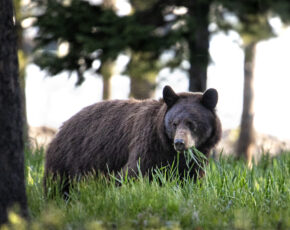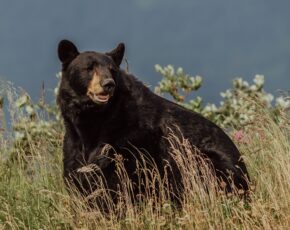Native Carnivores
Candids
Wolf
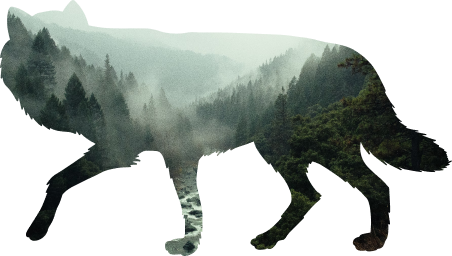
Level of Concern
Least Concern
Most Concern
The gray wolf (Canis lupus) is a canid species that inhabits most parts of the northern hemisphere. The number of recognized subspecies has fluctuated over the years, with a minimum of three now recognized in North America: norther gray wolf (C. l. occidentalis), gray wolf of the Great Lakes region (C. l. lycaon) and Mexican gray wolf of the southwestern United States and Mexico (C. l. baileyi). The red wolf (Canis rufus) of the southeastern United States is regarded as a separate species.
There exist robust populations of gray wolves in Alaska and Canada. In the coterminous United States and Mexico, however, where gray wolves were once plentiful almost everywhere, they were entirely extirpated by the mid-1940s, except for a small remnant population in northern Minnesota and a small population of Mexican wolves in Mexico.
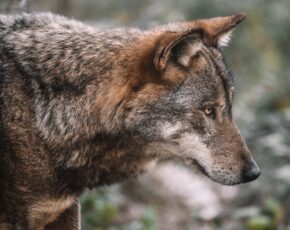
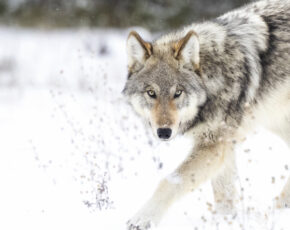
CoYOTE
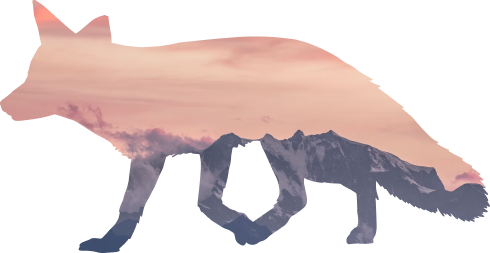
Level of Concern
Least Concern
Most Concern
The coyote (Canis latrans), pronounced ki-ote or ki-o-tee, is a wild canid native to North America, similar too but smaller than the gray wolf. It is a middle-sized predator, or “meso-predator.”
Adult coyotes in Utah typically range between 25 and 45 pounds, with males being larger than females. Coyotes in the eastern states, where there has been some interbreeding with wolves, tend to be larger than western coyotes. On average, coyotes are about 1/3 the size of wolves, have a slenderer, pointed snout, and have ears that are larger in proportion to their heads. They do not howl the way wolves do, but produce a chorus of eerie barks and howls that have resulted in them being called song dogs.
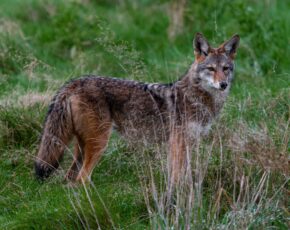
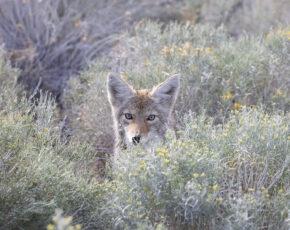
Felids
Cougar
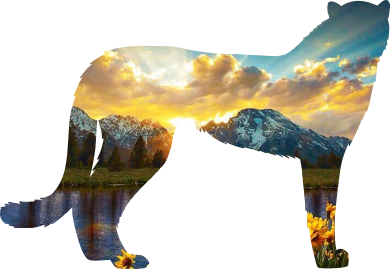
Level of Concern
Least Concern
Most Concern
Cougars (Puma concolor), also known as mountain lions, panthers, and pumas, are large felids native to the Americas. They are the fourth largest cat in the world, next to tigers, lions, and jaguars. The ideal cougar habitat is rugged, steep, rocky terrain, with scattered brush and trees and abundant prey.
When they are not sleeping, cougars are either hunting, exploring, playing, or searching for mates. They are crepuscular, meaning that they are most active at dusk and dawn. In the Rocky Mountain West, their primary prey is the mule deer, but they also eat elk, rabbits, porcupines, squirrels, grouse, and a variety of smaller animals. Some cougars occasionally prey on livestock. In most cases, these are young males who have not yet established home ranges with reliable sources of natural prey animals.
Consider yourself lucky if you happen to see a cougar in the wild, for it is rare and wonderful
experience.
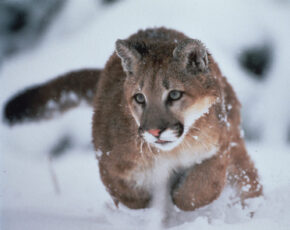
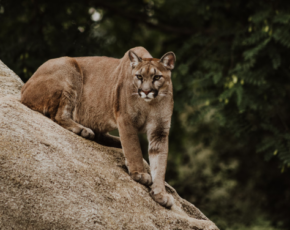
Bobcat
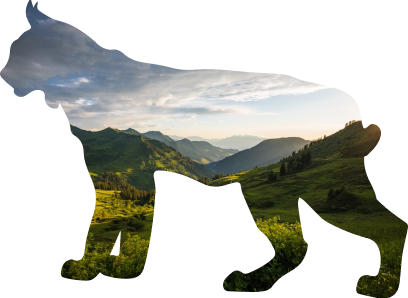
Level of Concern
Least Concern
Most Concern
Both the bobcat (Lynx rufus) and the Canada lynx (Lynx canadensis) are members of the lynx family of wild cats. The Canada lynx prefers high elevation alpine forest habitat and relies mainly on snowshoe hares as its preferred prey, with red squirrels being second choice. The lynx’s long legs and large furry feet aid it in pursuing and catching snowshoe hares in the deep snows common to North American high elevation forests. The bobcat is more of a generalist and lives comfortably in both desert, swampy, and forest environments, preying on a variety of small mammals, birds, and reptiles.
Bobcats are much more widespread than lynxes and there is no danger of them approaching extinction despite thousands being trapped for their fur. Canada lynxes are still abundant in Canada and Alaska but have been nearly extirpated from the lower 48 states, where they are listed as a threatened species under the Endangered Species Act. It is illegal to trap them in the US, but traps set for other species, such as bobcats, pose a threat to lynxes.
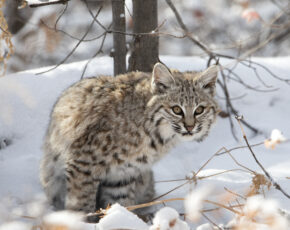
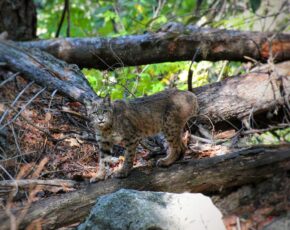
Lynx
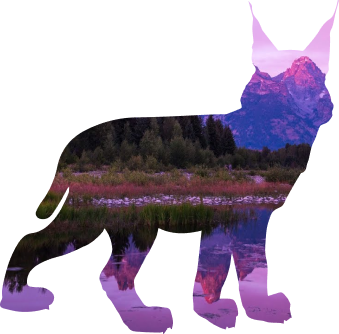
Level of Concern
Least Concern
Most Concern
The Canada lynx prefers high elevation alpine forest habitat and relies mainly on snowshoe hares as its preferred prey, with red squirrels being second choice. The lynx’s long legs and large furry feet aid it in pursuing and catching snowshoe hares in the deep snows common to North American high elevation forests.
Canada lynxes are still abundant in Canada and Alaska but have been nearly extirpated from the lower 48 states, where they are listed as a threatened species under the Endangered Species Act. It is illegal to trap them in the US, but traps set for other species, such as bobcats, pose a threat to lynxes.
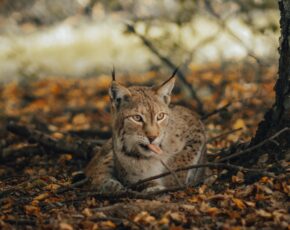
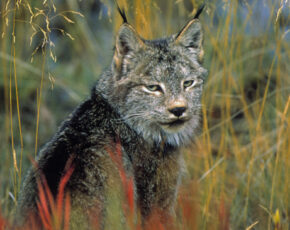
MUSTELIDS
Wolverine
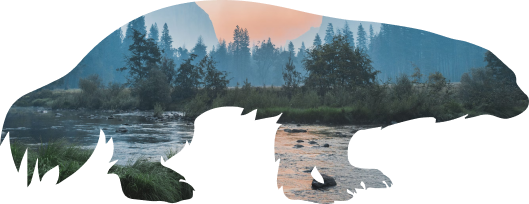
Level of Concern
Least Concern
Most Concern
The wolverine (Gulo gulo), sometimes called carcajou or skunkbear, is the largest land-dwelling mustelid (a family that includes weasels, badgers and otters) in the world. It is a circumpolar species, meaning that its range extends throughout the northern part of the northern hemisphere, where it prefers snowy habitats. In the 48 contiguous states, this includes the basins of high mountains, such as Utah’s Uinta Mountains. Wolverines typically weigh between 20 and 50 pounds, with males being about half again as large as females.
There are estimated to be only about 100 wolverines in the contiguous 48 states, yet in recent years the population seems to have been expanding into parts of its range where it had been extirpated by traps and poisons decades ago.
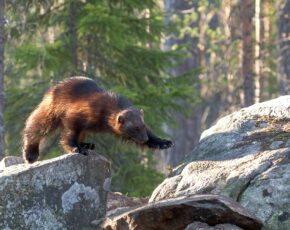
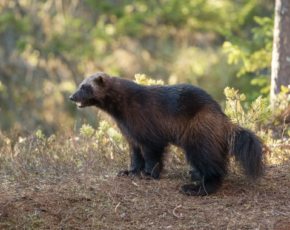
URSIDS
GRIZZLY bear
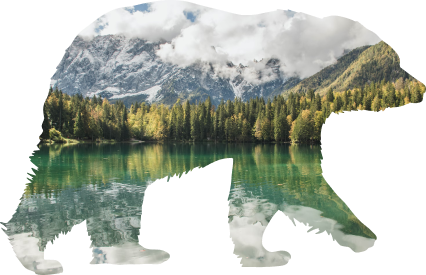
Level of Concern
Least Concern
Most Concern
Grizzly bears (Ursus arctos horribilis) in Utah were killed off long ago. Today, the closest population of grizzly bears to Utah is the one in the greater Yellowstone region centered on the juncture of Idaho, Montana, and Wyoming. The one other main population of grizzly bears in the forty-eight states is centered in Glacier National Park. The most famous Utah grizzly bear was known as Old Ephraim, who lived in the Bear River Range above Logan. He was reputed to weigh over 1000 pounds, and his skull resided for a time in the National Museum of Natural History at the Smithsonian Institution in Washington, D.C.
You are very fortunate if you see a grizzly bear in the wild. From a distance, they may be viewed safely and are very fascinating to observe. In
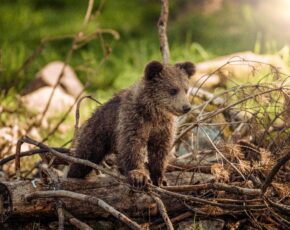
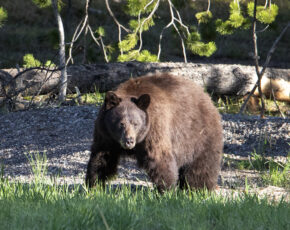
Black Bear
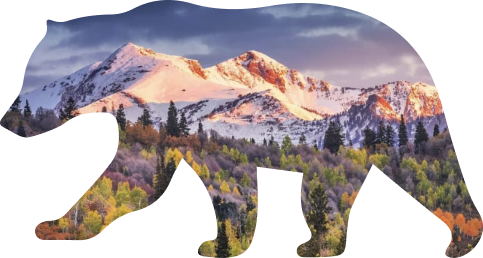
Level of Concern
Least Concern
Most Concern
(Ursus americanus) are more often seen in the wild than cougars, which prefer rougher terrain and are more secretive. Although called black bears, their color varies from coal black to shades of brown and red, and sometimes more than one color or shade. There are even silver and white black bears in some parts of North America. They possess a keen sense of smell and good hearing but relatively poor eyesight. Black bears are most active during hours of darkness; however, they may be active during daylight hours as well. Although they are members of the biological order Carnivora, black bears are omnivores, surviving on a varied diet consisting of forbs, sedges, roots, berries, pine nuts, ground squirrels, deer fawns, carrion, and other foods. Infrequently, they will kill larger mammals. Some occasionally prey on domestic sheep, mainly when natural food is scarce.
